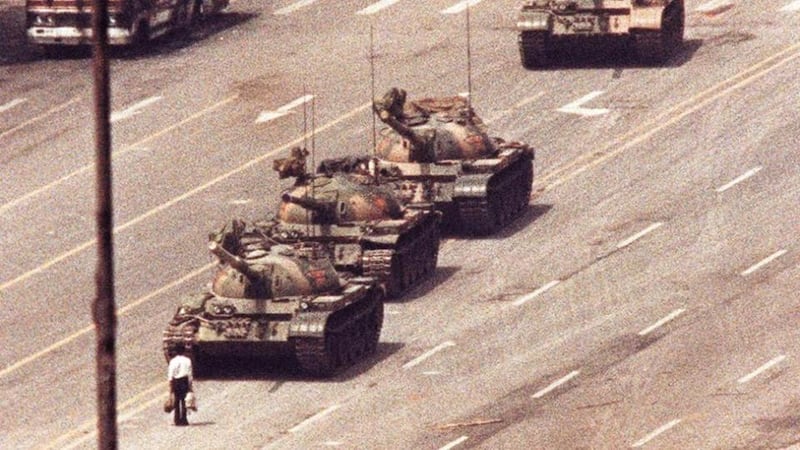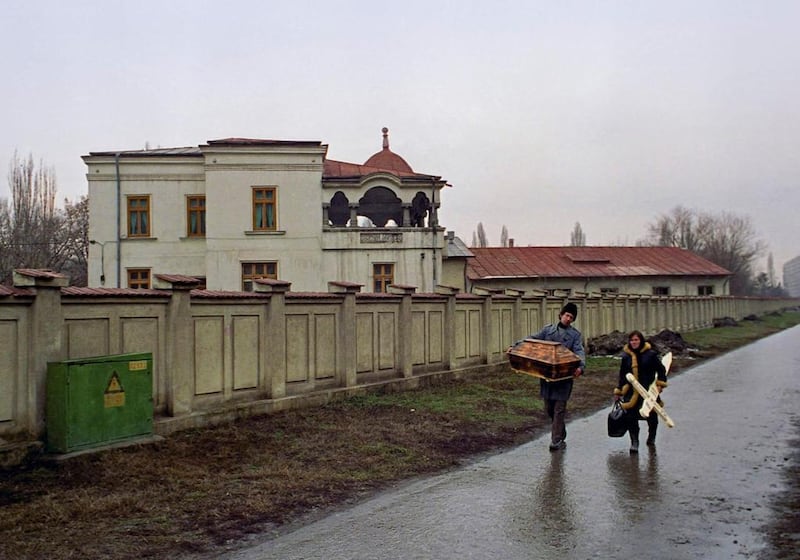In celebration of their 30th anniversary, the Reuters international news picture service has collected some of their most profound and haunting photographs of the last three decades.
Alongside these award-winning images, we have some behind the scenes stories from the photographers of how they came to take these photos, and the impact they had.
The first in this three part gallery covers news events across the world from 1985 to 1995. It captures some of the period's defining moments, from Nelson Mandela taking his long walk to freedom to the Berlin wall coming down.

[ Click here to see part two: Reuters 1995-2005Opens in new window ]
Below, two of the featured photographers describe how their images came about and why they still have resonance around the world today.

Photographer Radu Sigheti on the story behind this image
Romanian parents carry a small casket and cross as they arrive at a Bucharest hospital to collect the body of their dead baby who died of AIDS, February 1990. Photographer Radu Sigheti explains how he came to capture this heartbreaking scene.
"I found out that there is a ward at a hospital in Bucharest where children with HIV positive were hospitalised. I thought this is a story worth pursuing, at the time I had no idea what AIDS meant and I wanted to find out, thinking it would make a good story."
"I went there and took pictures of the children, aged between one to five years old but many looking like they were over 100; frail and helpless in their beds. One had died a day before."
"The smell of chloride was punching. At the time they used to spread it around that ward thinking it would keep it sterilised. That smell and the sight of those children, there were about 20-30 hospitalised, made me anxious and after a while I decided to leave as I could not stand it anymore."
"As I left with a friend we found his car, parked outside the hospital, with a flat tyre. He started working to replace it then at one moment I heard steps behind me."
"When I turned I saw this picture and I knew why they were there, for the child who died of AIDS a day before. I grabbed the camera and I took one shot. In the moment the couple heard my shutter noise they raised their eyes and looked straight at me. I took one more frame and I put the camera down."
"The look in their eyes said everything about their sorrow. I could not take any more pictures; I just followed them with my eyes as they slowly entered the hospital yard."

Photographer Yannis Behrakis on the story behind this image
Frantic Kurdish refugees struggle for a loaf of bread during a humanitarian aid distribution at the Iraqi-Turkish border in this April 5, 1992 file photo. Photograper Yannis Behrakis captured the panic on film.
"At the end of the first Iraq war about 1.5 million Kurds were fleeing in panic trying to escape from forces loyal to Saddam Hussein. About 600,000 of them fled to Turkey but half of them were stranded in the mountains at the Iraqi-Turkish border."
"I hitch-hiked a ride on a tractor pulling a cart full of bread to feed the stranded Kurdish refugees atop the snow capped mountains at the border."
"As the tractor made its way slowly through the dangerous dirt road, it was attacked by hundreds of hungry refugees who fought against each other and the aid workers. The men I was riding with tried in vain to stop the refugees from taking the bread but the refugees were absolutely desperate and the aid workers gave up."
"Getting up the mountain to cover the story was extremely difficult. I remember leaving the hotel every morning at 4 am in order to reach the bottom of the mountain two-and-a-half hours later. Then I hitchhiked my way on either a tractor carrying bread or on a snow-removal vehicle clearing the road. Once, my hands were so cold they stuck to the snow-removing vehicle."
"Pictures like this put pressure on the Turkish government to allow proper humanitarian aid to reach the refugees. It also alerted the international community about the tragic events in this part of the world and received very good play in what was the biggest story in the world at the time."
"It was the first time I was covering a humanitarian crisis and I was stunned with the cruelty some people demonstrated towards unprotected humans. I also understood that photojournalism is a very strong medium that can make a difference and help people in need."









